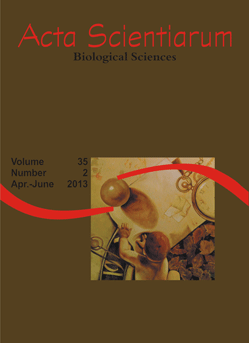<b>Medicinal plants used by the population of Goianápolis, Goiás State, Brazil</b> - doi: 10.4025/actascibiolsci.v35i2.13077
Resumo
In Brazil, the knowledge on the use of medicine plants comes mainly from natives with African and European influences. With descriptive purposes and valuation of traditional knowledge, a study with induced questioning was conducted in the municipality of Goianápolis, Goiás State, to verify the plants considered to be medicinal by the local population. The data collection through structured interviews in the form of questionnaires from sixty inhabitants randomly selected. The study followed the ethical aspects and was approved by the Unievangélica Research and Ethics Committee. Most of the interviewed subjects was of female gender, older than 30 years and had already lived in the rural area for at least one phase of their lives, the use of leaves and the method of tea making and infusion were most mentioned, the plants most used were Lemon Balm, Mint, Chilean evergreen tree, elderberry, wormseed, Pennyroyal, and the most mentioned families are Asteraceae and Laminaceae. The knowledge about plants use was obtained, according most of interviewed, from family. In conclusion, the data observed in Goianápolis, Goiás State, corroborates of those observed by other researchers about the use of plants, the most used botanical families, the plant parts to be used and the form of preparation.Downloads
DECLARAÇÃO DE ORIGINALIDADE E DIREITOS AUTORAIS
Declaro que o presente artigo é original, não tendo sido submetido à publicação em qualquer outro periódico nacional ou internacional, quer seja em parte ou em sua totalidade.
Os direitos autorais pertencem exclusivamente aos autores. Os direitos de licenciamento utilizados pelo periódico é a licença Creative Commons Attribution 4.0 (CC BY 4.0): são permitidos o compartilhamento (cópia e distribuição do material em qualqer meio ou formato) e adaptação (remix, transformação e criação de material a partir do conteúdo assim licenciado para quaisquer fins, inclusive comerciais.
Recomenda-se a leitura desse link para maiores informações sobre o tema: fornecimento de créditos e referências de forma correta, entre outros detalhes cruciais para uso adequado do material licenciado.












1.png)




3.png)













